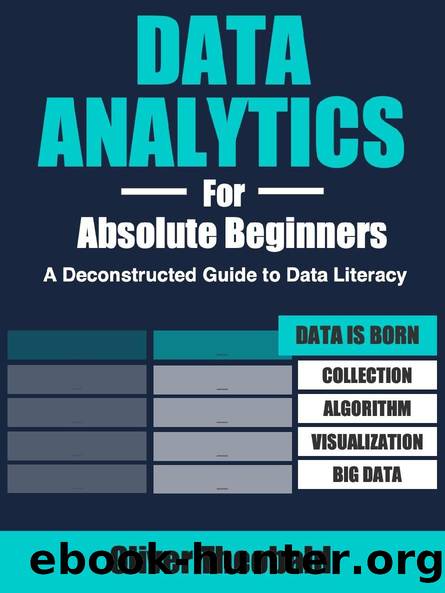Data Analytics for Absolute Beginners: A Deconstructed Guide to Data Literacy: (Introduction to Data, Data Visualization, Business Intelligence & Machine Learning) by Oliver Theobald

Author:Oliver Theobald [Theobald, Oliver]
Language: eng
Format: epub
Published: 2017-01-06T00:00:00+00:00
REGRESSION ANALYSIS
Regression analysis is a popular statistical technique used to model the relationship between one or more independent variables and the dependent variable. Businesses, for instance, often utilize regression to predict sales (output) based on a range of input variables including weather temperature, social media mentions, historical sales, GDP growth, and inbound tourists.
The objective of regression analysis is to find a line or curve that best describes patterns in the data. Although a single line or curve actually oversimplifies the data, it provides a useful reference point for making general predictions about future data. The quality of predictions derived from a regression line/curve is underwritten by co-relation, and specifically, a coefficient of correlation, which is equal to the square root of the lineâs variance. A coefficient of correlation is measured between -1 and 1, with a correlation of 1 describing a perfect positive relationship and a correlation of -1 indicating a perfect negative relationship. A coefficient of 0, meanwhile, means no relationship between the variables.
A negative correlation means that an increase in the independent variable leads to a subsequent decrease in the dependent variable. For example, a houseâs value (dependent variable) tends to depreciate as the distance to the city (independent variable) increases. Conversely, a positive correlation captures a positive relationship between variables. House value (dependent variable), for instance, generally appreciates in sync with house size (independent variable). In the case of plots C and D, no linear relationship exists between the two variables, relegating regression analysis a poor choice for interpreting the data.
Another potential problem is collinearity. This occurs when thereâs a strong linear correlation between two independent variables, which limits the regression modelâs capacity to predict the dependent variable. An example of collinearity would be using liters of fuel consumed and liters of fuel remaining in the tank as independent variables to predict car mileage. The two independent variables, in this case, are negatively correlated and virtually cancel each out when included in the same regression model. Rather, it would be better to include one variable and sideline the other variable. Height and weight are another popular example of two variables that are often highly correlated and can lead to problems with collinearity in the model.
Download
This site does not store any files on its server. We only index and link to content provided by other sites. Please contact the content providers to delete copyright contents if any and email us, we'll remove relevant links or contents immediately.
| Applied | Geometry & Topology |
| History | Infinity |
| Mathematical Analysis | Matrices |
| Number Systems | Popular & Elementary |
| Pure Mathematics | Reference |
| Research | Study & Teaching |
| Transformations | Trigonometry |
Modelling of Convective Heat and Mass Transfer in Rotating Flows by Igor V. Shevchuk(6378)
Weapons of Math Destruction by Cathy O'Neil(6117)
Factfulness: Ten Reasons We're Wrong About the World – and Why Things Are Better Than You Think by Hans Rosling(4675)
Descartes' Error by Antonio Damasio(3210)
A Mind For Numbers: How to Excel at Math and Science (Even If You Flunked Algebra) by Barbara Oakley(3207)
Factfulness_Ten Reasons We're Wrong About the World_and Why Things Are Better Than You Think by Hans Rosling(3187)
TCP IP by Todd Lammle(3120)
Fooled by Randomness: The Hidden Role of Chance in Life and in the Markets by Nassim Nicholas Taleb(3027)
Applied Predictive Modeling by Max Kuhn & Kjell Johnson(3006)
The Tyranny of Metrics by Jerry Z. Muller(2985)
The Book of Numbers by Peter Bentley(2897)
The Great Unknown by Marcus du Sautoy(2632)
Once Upon an Algorithm by Martin Erwig(2585)
Easy Algebra Step-by-Step by Sandra Luna McCune(2560)
Lady Luck by Kristen Ashley(2515)
Practical Guide To Principal Component Methods in R (Multivariate Analysis Book 2) by Alboukadel Kassambara(2485)
Police Exams Prep 2018-2019 by Kaplan Test Prep(2468)
All Things Reconsidered by Bill Thompson III(2345)
Linear Time-Invariant Systems, Behaviors and Modules by Ulrich Oberst & Martin Scheicher & Ingrid Scheicher(2323)
